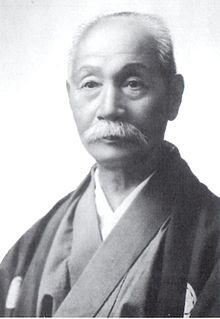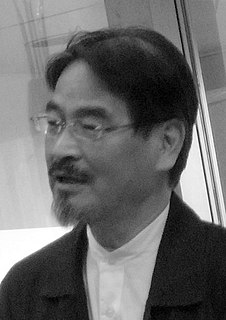
An instant camera is a camera which uses self-developing film to create a chemically developed print shortly after taking the picture. Polaroid Corporation pioneered consumer-friendly instant cameras and film, and were followed by various other manufacturers.

Daidō Moriyama is a Japanese photographer. He received the Infinity Award for Lifetime Achievement from the International Center of Photography in New York in 2004 and the Hasselblad Award in 2019.

Nobuyoshi Araki is a Japanese photographer and contemporary artist professionally known by the mononym Arākī (アラーキー). Known primarily for photography that blends eroticism and bondage in a fine art context, he has published over 500 books.

Kusakabe Kimbei (1841–1934) was a Japanese photographer. He usually went by his given name, Kimbei, because his clientele, mostly non-Japanese-speaking foreign residents and visitors, found it easier to pronounce than his family name.

Ueno Hikoma was a pioneer Japanese photographer, born in Nagasaki. He is noted for his fine portraits, often of important Japanese and foreign figures, and for his excellent landscapes, particularly of Nagasaki and its surroundings. Ueno was a major figure in nineteenth-century Japanese photography as a commercially and artistically successful photographer and as an instructor.

Hiroh Kikai was a Japanese photographer best known within Japan for four series of monochrome photographs: scenes of buildings in and close to Tokyo, portraits of people in the Asakusa area of Tokyo, and rural and town life in India and Turkey. He pursued each of these for over two decades, and each led to one or more book-length collections.
Yutaka Takanashi is a Japanese photographer who has photographed fashion, urban design, and city life, and is best known for his depiction of Tokyo.
Tadahiko Hayashi was a Japanese photographer noted for a wide range of work including documentary and portraiture.
The Japan Photographic Society was a Tokyo-based organization of photographers founded in 1889 that continued until the closing years of the nineteenth century.
Miyako Ishiuchi, is a Japanese photographer.
Hisae Imai was a Japanese photographer who specialized in the photography of horses.

Teikō Shiotani was a photographer whose work in and near Tottori in the late 1920s and early 1930s made him a major figure in Japanese pictorialism. As ideals and fashions in photography changed, his work was largely forgotten in postwar Japan until interest was reawakened by a 1975 book devoted to his work; he later became known outside Japan thanks to an exhibition of Japanese photography that toured Europe from 1979 to 1982.
Tadayuki Naitoh is a Japanese photographer known for his photographs of jazz musicians and of Africa.
Shigeichi Nagano was a Japanese photographer. He won the Ina Nobuo Award in 1986 and had a major retrospective at the Tokyo Metropolitan Museum of Photography in 2000.
Masaya Nakamura was a Japanese photographer particularly known for nude photography.
Shigeo Gochō was a Japanese photographer.

Toshiki Ozawa, was a Japanese photographer.
Yannis Kontos is a Greek documentary photographer, professor of photography and commercial photographer. He has covered major events for over a decade in more than 50 countries. His work has been published in newspapers, magazines, and books.
The history of photography in Japan begins in the 19th century and has continued to be a prominent art form into the present era.

Kansuke Yamamoto was a photographer and poet. He was a prominent Japanese surrealist born in Nagoya, Japan.













